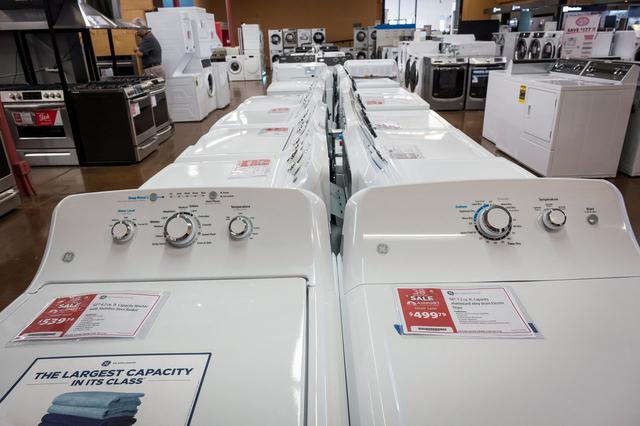GE Appliances Turns Up the Speed on Supply-Chain Upgrade
29/11/2021 By RuneLite
GE Appliances was in the midst of a digital supply-chain upgrade when the coronavirus pandemic hit, disrupting global supply lines while consumer demand soared for the company’s refrigerators and washing machines.
Instead of pausing the project to cope with the turmoil in retail markets, the appliance maker accelerated the pace of its upgrade even as a rush of orders from people staying at home, suddenly generating more piles of laundry and dirty dishes, pushed production capacity to its limits. For GE Appliances, the pandemic provided a fertile testing ground for digital tools intended to help balance manufacturing and demand by connecting parts of its supply chain that had been operating on separate tracks.
The effort took on new urgency as skyrocketing orders cleared out the appliances the company kept on hand. Previously, the company made products based on demand forecasts then shipped the finished goods to distribution centers to wait for orders.
“Now there’s no inventory,” said Melanie Cook, chief operating officer for GE Appliances. “Typically our customers would be used to placing an order, [and in] five to seven days they can get a product. Now we’re still building them.”
The real-time visibility GE Appliances was seeking in its supply-chain plan proved critical to the company’s response to rapid swings in demand as consumers first hunkered down and then sought the equipment for their homes to outlast the lockdowns.
Newsletter Sign-up
The Logistics Report
Top news and in-depth analysis on the world of logistics, from supply chain to transport and technology.
SUBSCRIBE
“When the pandemic first hit us we saw a drop. Then all of a sudden freezers spiked to record levels,” Ms. Cook said.
As people stayed home, daily usage of appliances shot up. “Refrigerator doors are being opened 40% more,” Ms. Cook said. “Washers and dryers are up 22%...We literally cannot keep up with the demand. We’ve invested, added capacity, and we’re still flat out.”
The new technology, from supply-chain software provider Blue Yonder, tracks the movement of goods from manufacturing plants to distribution centers. The software integrates that data with customer orders, using machine learning to anticipate delays and shortages and help companies decide how to allocate limited supply.
Rival appliance-maker Whirlpool
Corp.
also has struggled to meet the heightened demand, and said supply-chain constraints contributed to product backlogs in North America in the third quarter.
Louisville, Ky.-based GE Appliances, which is owned by China’s Haier Group, was expanding its U.S. production capacity before the pandemic hit, spending some $600 million since 2018 at its nine domestic plants and distribution centers.
Those investments include digital upgrades that Ms. Cook said helped the company navigate its global parts supply chain during Covid-19 and boost output. The appliance maker increased production by 25% in the second half of the year to meet the surging demand.
“
“We literally cannot keep up with the demand. We’ve invested, added capacity, and we’re still flat out.”

”
— GE Appliances Chief Operating Officer Melanie Cook
But production took a hit in the early stages. The company took a week in late March to reorganize its facilities to meet health and safety standards in the face of Covid-19, spacing manufacturing stations six feet apart, erecting barriers and bringing in face shields for workers from a GE Appliances microfactory. Volunteers from the company’s management and salaried workforce filled in for absent workers on the factory floor.
The Blue Yonder digital upgrade also began in March, with the rollout of software that allows GE Appliances to check stock levels at company distribution centers, track shipments from manufacturing plants and anticipate disruptions that could slow customer deliveries.
The tools helped GE Appliances pinpoint one cause behind a rising order backlog that came even as the company’s inventory reserve was growing. It turned out some partial shipments weren’t being sent out under procedures put in place before the pandemic, when some customers wouldn’t accept incomplete orders. “We are now able to identify those and work with our customers to release” them, a change that wouldn’t have been possible before, a spokeswoman said.
Blue Yonder’s technology pulls information from different programs, such as the company’s transportation or warehouse management systems, and harmonizes the data so managers can easily see how a delayed inbound shipment might affect customer orders or inventory levels.
Before, “all those entities acted independently,” said Cary VandenAvond, the software company’s senior vice president of growth initiatives. “This allowed them to have a layer on top of that so all the players in that network are aligned to the same priorities.”
Related Video
How will the pandemic affect America’s retailers? As states across the nation struggle to return to business, WSJ investigates the evolving retail landscape and how consumers might shop in a post-pandemic world.
More From Logistics Report
Schneider National Looks to Charter a Path Around Shipping Bottlenecks
August 26, 2021
Best Buy Bolsters Inventories Ahead of the Holidays
August 24, 2021
For E-Commerce Logistics Firm Radial, Christmas Is Coming Early. Very Early.
August 22, 2021
For Robot Trucks, Navigating Highways Is Just One Bump in the Road
August 18, 2021
Write to Jennifer Smith at jennifer.smith@wsj.com
Copyright ©2021 Dow Jones & Company, Inc. All Rights Reserved. 87990cbe856818d5eddac44c7b1cdeb8